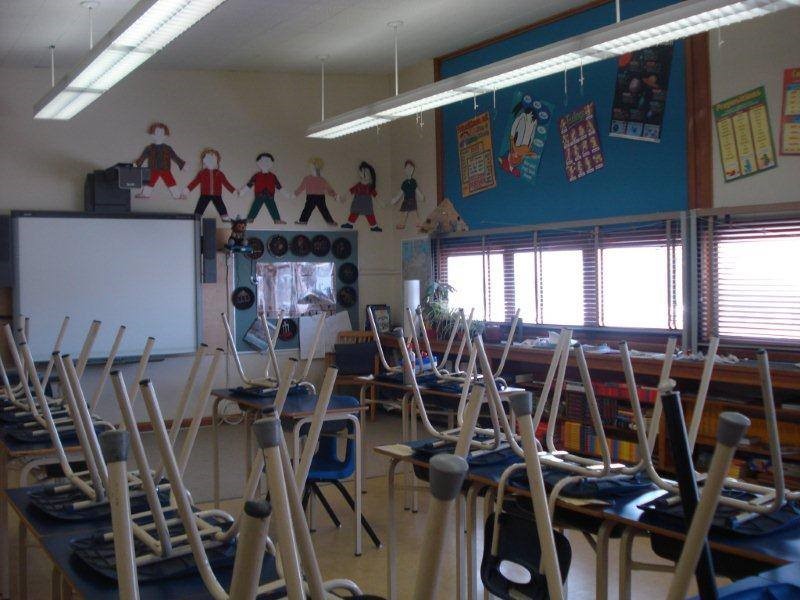
Written by guest blogger Melanie M. Wong.
Educational research, in my opinion, is most effective when it is put into practice. In one of my early graduate courses I remember a professor commenting on how it took over forty years for research to enter into the classroom. Hearing this comment at the time both terrified and motivated me as a researcher. In my day job, I build the capacity of hundreds of teachers in a large Canadian school district to support their English Language Learners (ELLs) in their various classrooms. As I read the literature and work with teachers, I recognize the urgent need for both researchers and teachers to consider the implications of research in a classroom and how research can both inform and improve teaching practice. Therefore, in this blog post, I would like to elaborate on some of the potential implications of my own study of a technology-enhanced classroom for K-12 students and teachers. I argue that it is critical that educators have an understanding of what occurs in the various learning spaces of their classrooms and beyond, whether technology-enhanced or not.
In my own personal experience, educators are at varying levels of readiness to use digital technologies in the classroom. Whether it is SMART boards or learning management systems, these tools are often not utilized in K-12 classrooms intentionally or effectively. These digital technologies are tools for learning but they also offer a new world of learning opportunities for K-12 students which has been documented extensively in the literature (e.g., Abrams, 2016; Black, 2008; Ito et al, 2013; Jenkins et al, 2016; Lam, 2009; Lam & Warriner, 2012; Yi, 2008). However, although technologies are readily used by K-12 students in the interstitial (non-sanctioned) learning spaces (e.g., outside of school, hallway etc.), teachers are not necessarily using these technologies in the classroom context. The findings from my study assert that rich and engaging learning experiences occur when teachers intentionally design tasks which allow students to tap into their various shared histories of learning (Wenger, 1998). These shared histories of learning include students’ experiences using digital technologies and their experiences in interstitial learning spaces. It is not about the technology but rather about providing students with a variety of options to represent their meaning making. For example, a teacher might consider providing students with an open-ended/essential question to explore (e.g., What makes a good citizen?). Students will then be asked to unpack/explore this question and represent their understandings in the way they choose. By providing students with different options (digital or not), it helps to meet the learners’ needs and engagement.
In my study, a prevalent theme was the usage of YouTube in both the school-sanctioned and interstitial learning spaces. Youtube was often a first stop for my participants when it came to finding information to inform a school project or the discovery of a new literacy practice (e.g., Rap Battles). Educators need to gain a deeper understanding of what happens in the out of school contexts (e.g., students using YouTube) because it impacts learning in a classroom. Due to the affordances of digital technologies, ideas and practices are moving seamlessly into different physical spaces. Even within the physical spaces of a classroom, students are engaging in numerous learning spaces at one instance. Knowing about what occurs both inside and outside of the classroom helps teachers to be more effective when planning for instruction and knowing their learners. I would argue it is an essential part of being an effective teacher whether technology is utilized in the classroom or not.
References
Abrams, S.S. (2016). Emotionally crafted experiences: Layering literacies in minecraft. The Reading Teacher, 70 (4), 501-506.
Black, R. W. (2008). Adolescents and online fan fiction. New York, NY: Peter Lang.
Ito, M., Baumer, S., Bittanti., M, boyd, d., Cody, R., Herr-Stephenson, B., Horst, H.A., Lange, P. G., Mahendran, D., Martinez, K. Z., Pascoe, C. J., Perkel, D., Robinson, L., Sims, C., & Tipp, L. (2013). Hanging out, messing around, and geeking out. Cambridge, MA: The MIT Press.
Jenkins, H., Ito, M., & boyd, d. (2016). Participatory culture in a networked era. Malden, MA: Polity Press
Lam, W. S. E. (2009). Multiliteracies on Instant Messaging in Negotiating Local, Translocal, and Transnational Affiliations: A Case of an Adolescent Immigrant. Reading Research Quarterly, 44(4), 377-397.
Lam, W. S. E. & Warriner, D. (2012). Transnational and literacy: Investigating the mobility of people, languages, texts and practices in contexts of migration. Reading Research Quarterly, 47 (2), 191-215
Wenger, E. (1998). Communities of practice: Learning, meaning and identity. York, NY: Cambridge University Press.
Yi, Y. (2008). Relay writing in an adolescent online community. Journal of Adolescent & Adult Literacy, 51 (8), 670-680.
Melanie M. Wong is a PhD candidate at the University of British Columbia. She is also a K–12 educator. Her latest article in The Canadian Modern Language Review entitled “‘Sa:y What You Want . . .’: Rap Battles in a Technology-Enhanced Classroom” is free to read for a limited time here
Comments on this entry are closed.